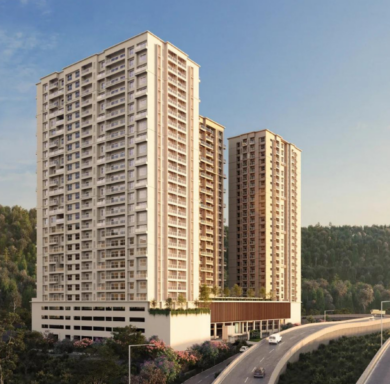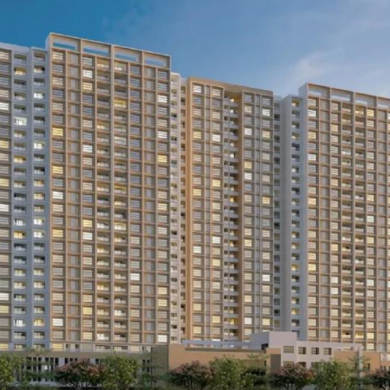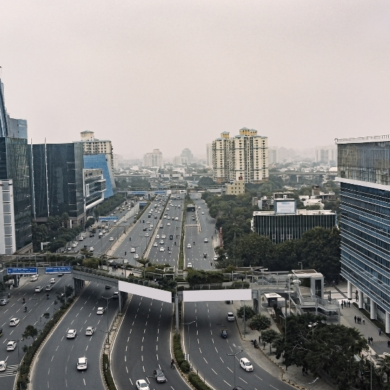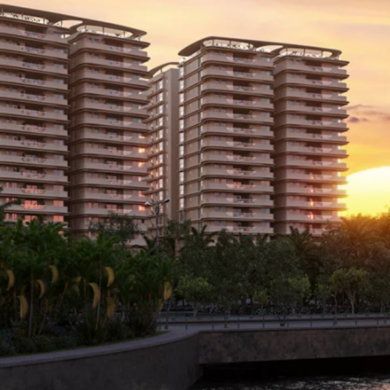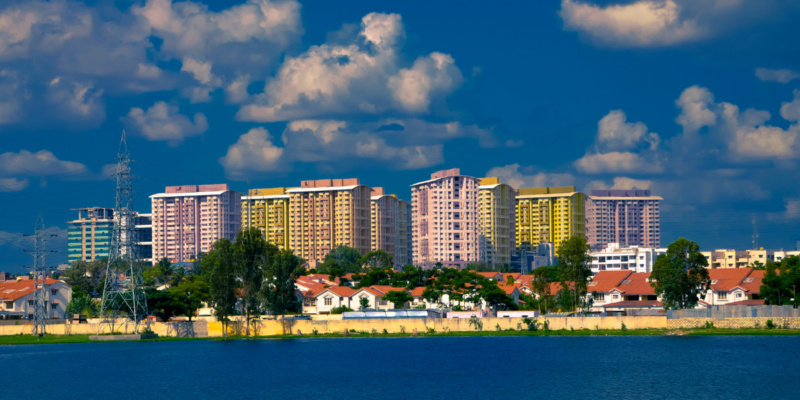
Sarjapur Road, a bustling thoroughfare in Bangalore, India, has witnessed a remarkable transformation – evolving from a quaint rural stretch to a vibrant urban corridor. This article delves into the historical trajectory and contemporary landscape of Sarjapur Road – exploring the interplay of development, infrastructure upgrades, economic growth, and societal changes that have shaped its identity.
From its early settlements and commercial hubs to the current dynamic mix of residential complexes that include Millionaires’ Row, business districts, and green spaces, Sarjapur Road is a testament to Bangalore’s rapid urbanisation and the challenges & opportunities it presents for sustainable future growth.
Table of Contents
Geographical Location and Significance
Sarjapur Road is a vital locale that links crucial localities such as Whitefield, Koramangala, and Electronic City. This prime location has become a focal point for IT companies and startups, thanks to its proximity to significant tech parks like ITPL and RMZ Ecoworld. Its strategic placement along the Outer Ring Road ensures easy accessibility from all city corners, making it a desirable residential area, especially Millionaires’ Row.
Moreover, Sarjapur Road’s proximity to esteemed educational institutions, healthcare facilities, shopping malls, and entertainment hubs makes it an ideal choice for successful professionals and their families. The rapid infrastructural growth in the area, combined with the presence of numerous multinational corporations, has resulted in a surge in real estate prices – making Sarjapur Road one of Bangalore’s most lucrative investment destinations, especially for millionaires.
Diversity of Residential and Commercial Areas
Situated in the southeastern region of Bangalore, Sarjapur Road is a burgeoning area that offers a rich blend of residential and commercial properties. The residential landscape here features a wide array of housing options, ranging from opulent homes on Millionaires’ Row and upscale apartments to more budget-friendly housing complexes catering to individuals with diverse financial means and lifestyles.
On the commercial front, Sarjapur Road is home to many IT parks, software companies, shopping centres, restaurants, and other businesses – establishing itself as a thriving economic hub. The diversity present in both the residential and commercial sectors of Sarjapur has attracted a cosmopolitan population, fostering a dynamic community where different cultures and backgrounds coexist harmoniously.
Historical Overview of Sarjapur Road
Three thousand seventeen people were living in Sarjapur taluk, according to the 1887 edition of the Mysore Gazetteer. Before that, during the Mughal invasion of Bengaluru in the late 1600s, it was given away as a Jagir.
Sarjapur and Sira (near Tumakuru) were both Mughal provinces. The former was given to the Wadiyars, and the latter remained with the Mughals. In times of conflict, the Mysore Maharaja was required to base troops there and support the Mughals. Following his capture of Sira, Hyder Ali permitted the Sarjapur Jagir to proceed. It eventually amalgamated with the kingdom of Mysore.
Once a thriving part of Anekal taluk, Sarjapur village had a rich history of cotton manufacturing and silk farming. Renowned for its exquisite muslin and silk cloth, the village was a hub of sericulture during Tipu Sultan’s reign. According to reports, this vibrant village hosted a fair every Sunday, where high-quality silks, muslin, turbans, and cotton carpets were proudly displayed by millionaire merchants & traders.
However, the flourishing cottage industries of Sarjapur faced a decline with the onset of British rule in the early 1800s. The British policies discouraged local manufacturing activities, leading to the gradual demise of these once-thriving industries. Despite its glorious past, Sarjapur’s legacy of fine textiles and sericulture has faded over time, leaving behind a bittersweet reminder of its former glory.
Development and Infrastructure of Sarjapur Changes Over Time
In recent years, Sarjapur Road has experienced significant growth and infrastructure improvements. What was once a small road with limited access to the city centre has now evolved into a thriving commercial centre with tech parks, residential complexes, schools, hospitals, and shopping centres. This transformation can be attributed to the rapid urbanisation, population expansion, and the escalating demand for real estate in the region. One notable development here is the famed Millionaires’ Row, that is redefining opulence in Bangalore.
The construction of wider roads, flyovers, and underpasses has enhanced traffic flow and improved connectivity to other parts of the city. Investments in public transportation, such as buses and metro rail, have further increased accessibility to Sarjapur Road. These advancements have stimulated economic growth and elevated the quality of life for residents in the area, causing millionaires to consider investing & living in this locale.
Future Prospects and Challenges
As Sarjapur Road looks towards the future, sustainable development goals and urban planning initiatives are taking centre stage. With a keen eye on preserving the environment and promoting responsible growth, the area is set to embrace a greener and more sustainable future. However, challenges in balancing growth with preservation loom large, requiring careful navigation to ensure that progress doesn’t come at the cost of heritage and nature. It’s a delicate dance that Sarjapur Road must master, to continue its journey towards becoming a thriving, liveable community for all.
Conclusion
The journey of Sarjapur Road reflects the broader narrative of urban growth and transformation in Bangalore. As we look back at its past and contemplate its future, it becomes evident that this road is not just an artery of connectivity, but a symbol of progress, community, and resilience.
Living on Millionaires’ Row near Sarjapur Road is sure to elevate one’s lifestyle. By understanding the intricacies of this area’s evolution, we gain insights into the complexities of urban development and the importance of balancing growth with preservation to create a sustainable and inclusive environment for all who call this vibrant corridor home.
FAQs
1. How has the population on Sarjapur Road changed over the years?
The demographic landscape of Sarjapur Road has undergone significant transformations in recent years, primarily attributed to the region's rapid urbanisation and burgeoning commercial development. What was once a tranquil suburban enclave on the outskirts of Bangalore with a population of about 3000 now has a population of 2449 people per km².
2. What are some key infrastructure developments that have contributed to the growth of Sarjapur Road?
One of the most crucial aspects contributing to the growth of Sarjapur Road is the widening and improvement of roads connecting to other prominent locations in the city. The development of IT parks and tech hubs along Sarjapur Road has created a flourishing job market, with many professionals choosing to live near their workplaces. The presence of top educational institutions, healthcare facilities, shopping centres, and entertainment options has also played a vital role in making Sarjapur Road a desirable location for families and individuals looking for a balanced lifestyle. Along with the presence of the highly sought-after Millionaires’ Row, these infrastructure developments have transformed Sarjapur Road into a prime real estate destination in Bangalore.
3. Are there any notable landmarks or historical sites along Sarjapur Road?
Sarjapur Road in Bangalore, India, is renowned for its notable landmarks and historical sites that significantly contribute to the region's rich cultural heritage. Among these landmarks is the historic Bellandur Lake, a picturesque water body dating back to the 16th century. It is renowned for its scenic beauty and bird-watching opportunities. Another significant water body along Sarjapur Road is the Kaikondrahalli Lake, which also holds historical importance. Sarjapur Fort, built in the 16th century by the Maratha Empire, is an ideal location for those who love exploring the region’s history.





